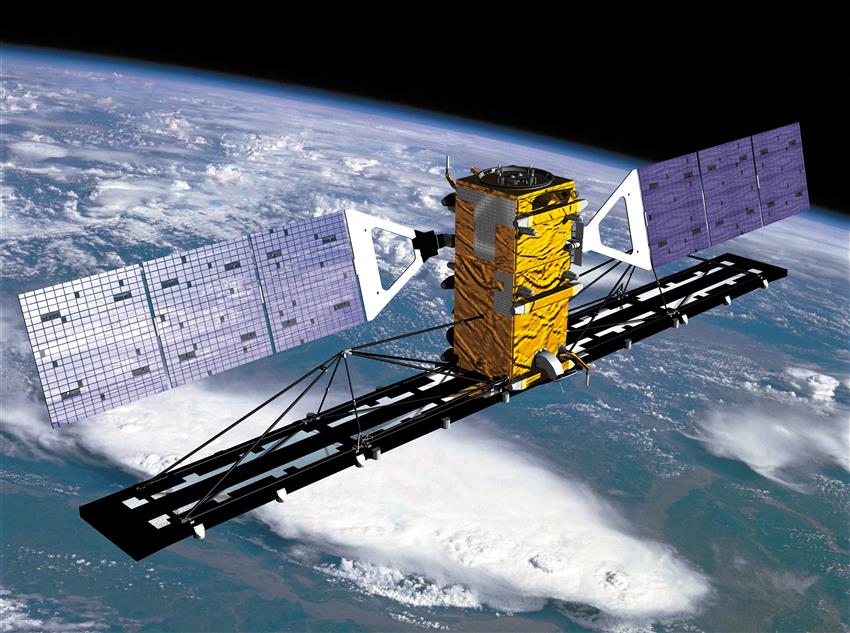Can space technology help reduce chronic stress experienced by whales?

Mother and baby sperm whale. (Credit: Gabriel Barathieu)
Did you know?
Studies have shown that right whales are working hard to change their vocalizations so they can communicate in the loud waters of the North Atlantic (Parks et al ). Noise induces chronic stress in whales that likely affects their long-term fitness. Strong evidence of this effect occur in the days following 911 when many ships remained in port and the ocean noise levels along the north American eastern seaboard dropped. The levels of stress hormones (cortisol) in right whale feces dropped by orders of magnitude at the same time (Rolland et al 2012).
Why is underwater noise pollution a problem?
Noise pollution, like other pollution, may negatively affect marine species, potentially causing changes in their behavior that could lead to long term effects on their populations.
- Sudden and very loud noise can startle nearby marine animals and cause hearing damage.
- Continuous noise can mask the sounds that animals use to communicate with one another and disrupt activities such as feeding and socializing.
How is the Canadian Space Agency contributing to the development of innovative solutions?
In , six projects from Canadian companies were selected to receive funding through the Canadian Space Agency's Earth Observation Applications Development Program (EOADP) and partly from Defence Research and Development Canada (DRDC). Each project is proposing an innovative application, using space data collected by satellites, which addresses challenges associated with maritime traffic in Canadian waters.
Here is some insight on one of these proposals which will look into using space data on maritime traffic to minimize the effects of vessel noise on marine life - a very interesting project study to be undertaken by JASCO Applied Sciences.
What is the impact of maritime traffic on marine life habitat?

An endangered North Atlantic right whale near a ship off the East Coast. (Credit: Florida Fish and Wildlife Conservation Commission, via National Oceanic and Atmospheric Administration [NOAA])
It's easy to imagine that below the surface, the ocean is a deep and silent space. But life underwater is naturally filled with sound. Sound, unlike light, travels remarkably well underwater. That's why marine species have evolved to mostly use sound instead of sight to navigate, avoid predators, forage for food and find mates. However, it has been observed that our oceans are becoming alarmingly loud due to noise pollution resulting from human activities. Man-made ocean noise is recognized as a real threat to marine life, affecting animals ability to communicate across ocean basins the way they could just 100 years ago. The issue of underwater noise needs to be addressed rapidly knowing that damaging effects on marine life can be accumulative and recognizing that maritime traffic is persistently increasing.
The obvious solution is to build quieter vessels, however, that change will take 30 to 50 years to become wide spread. In the short to medium term, this problem requires solutions that industry and regulators can implement seamlessly into their existing operations and business structures.
JASCO Applied Sciences is proposing a space-based solution that would combine knowledge on noise sources like the number of vessels navigating in a given area and their proximity to marine habitat. Using satellite data to generate knowledge on these harmful situations could become an important breakthrough.
How is JASCO Applied Sciences addressing this problem?

Map showing global ship traffic tracked through satellite space-based Automated Identification System (S-AIS) technology. (Credit: European Space Agency)
This project will investigate the feasibility of developing new tools to manage the effects of vessels underwater noise emissions on marine life. Vessel noise emissions depend on the size of a ship, the depth of its propellers, and how fast it is traveling. All large ships broadcast this information every few minutes as part of an automatic signal which is recorded by satellites equipped with a S-AIS; a technology that is used to monitor maritime traffic.
Under this study, JASCO Applied Sciences is looking at predicting the total sound levels within known marine life habitat by integrating the S-AIS data with acoustic sound propagation simulations in conjunction with satellite imagery. Such a tool would provide knowledge and awareness on the extent of underwater noise emissions and even explore the impact of maritime traffic rules that would impose a change on vessels speeds, routes and their passage times.
Can the proposed solution be tested?
During this 10-month feasibility study, the company will demonstrate their concept by conducting a test case in the coastal waters of Nova Scotia, namely: the Roseway Basin off southern Nova Scotia, which is home for endangered northern right whales; the Emerald Bank, a protected area for haddock; and the well-known Gully Marine Protected Areas, safeguarding more than 2,300 square kilometres of marine habitat of the endangered northern Bottlenose whale.
What is the way forward?
If JASCO Applied Sciences can successfully develop the capability to use satellite data to forecast marine noise levels, it would unquestionably be a major step forward in protecting marine life and improving our overall environmental stewardship. In a near future, it may be possible to equip marine traffic controllers with tools to forecast sound levels based on current vessel positions, courses, and speeds. When alerted that sound levels exceed thresholds that could cause disturbances to marine life, they could request vessels to make course or speed corrections to mitigate the impacts.
But for now, JASCO Applied Sciences will lead a highly diversified team comprised of software developers, physicists, acoustic modellers and marine biologist, who will bring their unique expertise with the goal to innovate; using space technology to significantly improve the way we protect marine life.
- Date modified:

